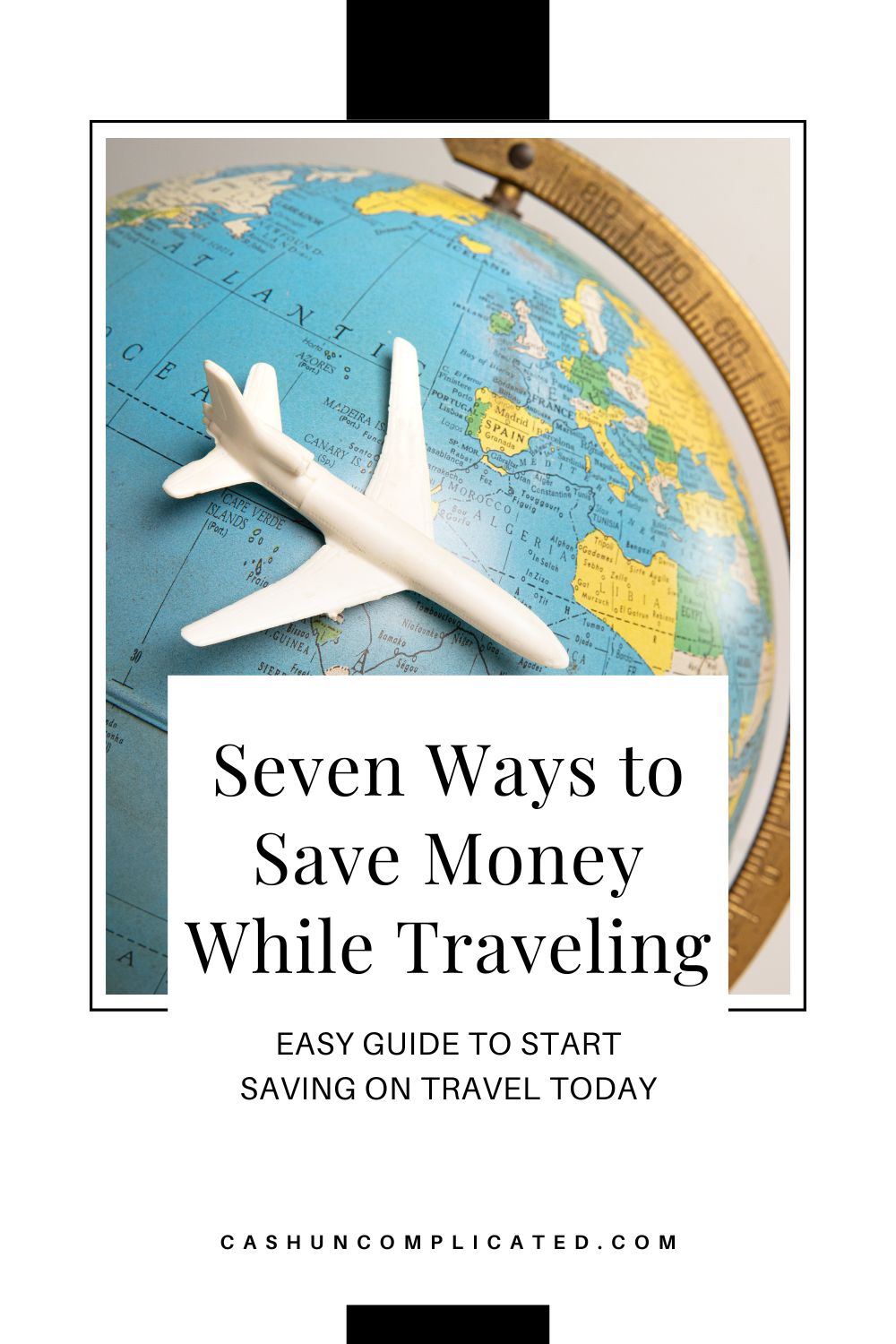There’s a misconception that saving money is boring and that savers are missing out on a lot of fun. Spending money on trips and fast cars is seen as exciting while saving is seen as well, not so exciting. Boring even. In a vacuum, I guess there’s something to this. But in real life, you can do both. Saving to be spontaneous is easily achieved.
I’m not sure where the idea came about that you can’t both be both a saver and spontaneous. Maybe that’s just the image that stuck over the years and it’s been accepted as truth. Who knows why—the important thing is to recognize it’s not true.
Example: Saving to be Spontaneous
To demonstrate that anyone can be both spontaneous and a saver, let’s use a fictional person named Melissa. A world traveler and weekend getaway enthusiast, Melissa wants to enjoy life and do fun things. She loves to both plan long getaways and go on spur of the moment weekend trips. Melissa describes herself as a planner for long trips, and a spur of the moment short term traveler.
Currently, Melissa has a trip planned to Costa Rica next spring and is looking to take a few short weekend trips this summer. She has enjoyed planning for the Costa Rica trip but really doesn’t need much advance notice for a weekend trip. Maybe a couple hours to pack and get ready, but that’s about it.
If a friend texts her on a Friday afternoon she’s ready to leave by early evening. Last month, her good friend texted her a little before 5:00 in the afternoon and they were in the car at 7:00 on the way to a short weekend getaway. She had no other plans for that weekend, so no reason not to go she thought.
Values
One thing Melissa knows about herself is that she loves to travel and go on short weekend trips. She also values saving and investing. A few years ago, Melissa set up an online investment account where she automatically contributes 20 percent of her paycheck for the month. She also set up an online savings account where she automatically contributes $500 per month for emergencies and the inevitable things that come up.
Last but not least, Melissa set up an online travel account in which she contributes $400 per month. This money is meant to be spent. The purpose of this account is not to let the cash pile up and then put it in an investment. It has to be spent on travel or a fun weekend trip, no exceptions. If she has any money left over from the previous year, it rolls over into the next year.
Whenever Melissa purchases a trip she uses her credit card, transfers the money from her vacation fund to her checking account, and pays off the credit card in full. No travel debt, no payment plans. Just a paid off trip.
Related:
How Value-Based Spending Can Change Your Life
Are Your Financial Values Aligned With Your Life Values?
Since Melissa likes to be spontaneous, this works out perfectly for her. When her friend texted her last month for the last minute weekend getaway, she booked the hotel on her credit card, quickly transferred the money to her checking account and paid off the trip fully when her bill became due. The whole process took less than five minutes.
Using this system, Melissa can be spontaneous and pay for her trips without going into debt. Since she knows she enjoys both longer vacations and spontaneous weekend trips, she pre-pays for them by having a savings account specifically for that purpose. As long as she’s not going over what she saves, she can be as spontaneous as she wants.
The Steps
Anyone can do what Melissa did. Here are the steps to being a “spontaneous saver.”
Step 1: Think About the Travel, Trips, and Experiences You Want to Partake in For the Next Year
Saving to be spontaneous requires a bit of planning. Fun planning—but still planning. Think about your last few years and the upcoming year. What vacations and trips do you want to take in this upcoming year? A long vacation and a few weekend getaways? A couple short vacations and some weekend getaways? Think about all the travel and experiences you want to partake in.
There’s no real limit here, this is almost the dream phase where you list everything you want to do in the upcoming year. There are some variables like who you’re going to travel with, time away from work, travel with children, etc. For example, if you have a one-month old newborn and your dream vacation is a month-long safari in Africa, you’re probably going to hold off on that particular trip.
However, you likely have other trips you want to take this year as the child gets a little older. List what those are. Write them all down, leaving enough room to create additional columns.
Step 2: Travel and Experience Hacks
This is an important step that’s often forgotten. This is the step where you get your brain working to find easy ways to save on travel. Flying to New York, Hawaii, or anywhere else in the world? Use miles from your credit card to get a free flight.
If you’re adverse to credit cards or have a history of not paying them off, that’s not an option. But if you’re responsible with using a credit card that offers airline miles, there are a lot of good options out there. I’ve taken many free flights over the years as have many other people in my circle.
Taking a family vacation where it’s not possible to bring the family dog? Try having a friend of family member watch your dog for free. Then you can watch their dog when they go on vacation. This avoids expensive pet hotels and boarding kennels. Which makes going on vacation less financially demanding.
Going to a mountain or beach town with a few friends? Try getting a short term rental together instead of a hotel for just yourself. Not only can the initial cost of the nightly stay be less, but houses come with a kitchen for you to make your own food. Another big savings hack.
Most of these examples take very little extra effort but can reward you with big savings. You can use those savings to book an extra trip or two throughout the year or just cut down on the amount you need to save for the trips you want to take. Either way it’s a financial win.
Step 3: Figure Out How Much It’s Going to Cost
Take the list you wrote down and create a third column titled “estimate.” This is where you’re going to write down what you think each experience is going to cost. You don’t have to do a lot of research here, just provide estimates. For example, if a two-week trip to Hawaii is on your list, take a few minutes to check airline and hotel prices in the month you want to go.
If you’re utilizing some of the travel hacking strategies written above, factor those in too. Using the example of a trip to Hawaii—if you’re using airline miles to pay for the flight, you don’t need to factor in the cost of the plane flight other than the taxes and fees you’ll need to pay.
Calculate your estimated costs and write those down in the third column. Do this for all the trips you are planning this year. You may also want to add a couple miscellaneous trips so you have the money to take spontaneous trips as they come up. Add up the total cost of the trips and write that down in the bottom of the chart.
Step 4: Divide Into Monthly Costs
Create a fourth column “monthly cost.” This column is straightforward and easy. Just take your yearly total and divide by 12. That’s the amount you’ll need per month to fund your trips and vacations.
A few simple examples:
- $3,000 per year on trips and vacations divided by 12 equals $250 per month
- $5,000 per year on trips and vacations divided by 12 equals $417 per month
- $7,000 per year on trips and vacations divided by 12 equals $583 per month
- $9,000 per year on trips and vacations divided by 12 equals $750 per month
Step 5: Decide if the Costs Align With Your Values and Adjust Accordingly
This is where you go through each trip and decide if it’s worth the cost. In the column on the far right hand side, write yes if the cost is worth it, no if it’s not, and maybe or probably if you’re undecided. For the categories where you write maybe or probably, save the money for those trips in case you decide to take them. For the no’s, you can eliminate that cost.
Step 6: Set Up an Account and Automatically Save That Money Every Month
This is another relatively simple step. Set up an account specifically for trips and vacations and contribute the amount needed to pay for the trips you want to take. At the start of each month, set it up so that the necessary funds are automatically deducted.
Step 7: Book the Trip and Pay it Off!
This is the easiest and most fun step. All your hard work and planning has paid off. Book the trip, pay it off, and enjoy your time away!
Sample Table:
| Desired Trip | Travel Hacks | Estimated Cost | Monthly Cost | Worth It? |
| Week and a half in Hawaii | Use airline miles from credit card for a free flight | $1,700 | $142 | Yes |
| Three-day weekend in nearby mountain town | Split vacation rental home with friends | $400 | $33 | Yes |
| Weekend away with spouse | Ask relatives to watch children and pets | $350 | $29 | Yes |
| Four days at a lake house with family | Split vacation rental home with family | $500 | $42 | Yes |
| Overnight staycation | Find a good local deal | $125 | $10 | Maybe |
| Spontaneous weekend trip | Find a great last minute deal | $350 | $29 | Maybe |
| Spontaneous four to five-day trip | Travel on weekdays and/or during off peak season | $550 | $46 | Yes |
| Total | N/A | $3,975 | $331 | N/A |
This table is just an estimate. You can do everything on this list or none of it. It’s flexible because it gives you an outline of how much money you are going to need for each experience. If you decide to scratch the Hawaii trip and go somewhere else, that’s totally fine. You’ve already got the money allocated for a big trip, it really doesn’t matter where you go as long as you’re near your allocated budget.
Or if you decide to skip a couple weekend trips in favor of a weeklong trip, that’s fine too since they’re going to cost about the same. The idea is really to get an estimate so you know about how much you need to save.
In the example table here, the estimate for the year turned out to be a little under $4,000 for the year. That’s about $331 someone would need to save per month to pay for these trips.
Saving to be Spontaneous: Plan for It
We can all plan to be spontaneous. It sounds like an oxymoron because spontaneity and planning don’t really go together. But when we change our paradigm to preparing to be spontaneous, it makes sense. It’s just stockpiling our savings to have enough to pay for trips and experiences.
Those trips and experiences don’t have to be planned out months and years in advance. Plans can literally be made day of, or the night before if we’ve got the money.
It’s not cool or glamorous to be spontaneous without the money to pay for it. The momentary feelings of excitement quickly evaporate when the credit card bill comes due and there’s no money to pay for it. There’s nothing spontaneous or fun about paying hundreds of dollars per month in interest and fees to the credit card company.
Fortunately, we can all take the steps to be spontaneous. A little preparation opens up the doors to new and exciting travel and experiences. Our only job is to make sure we can pay for it. Then we can be spontaneous all we want.
How are you saving to be spontaneous?











